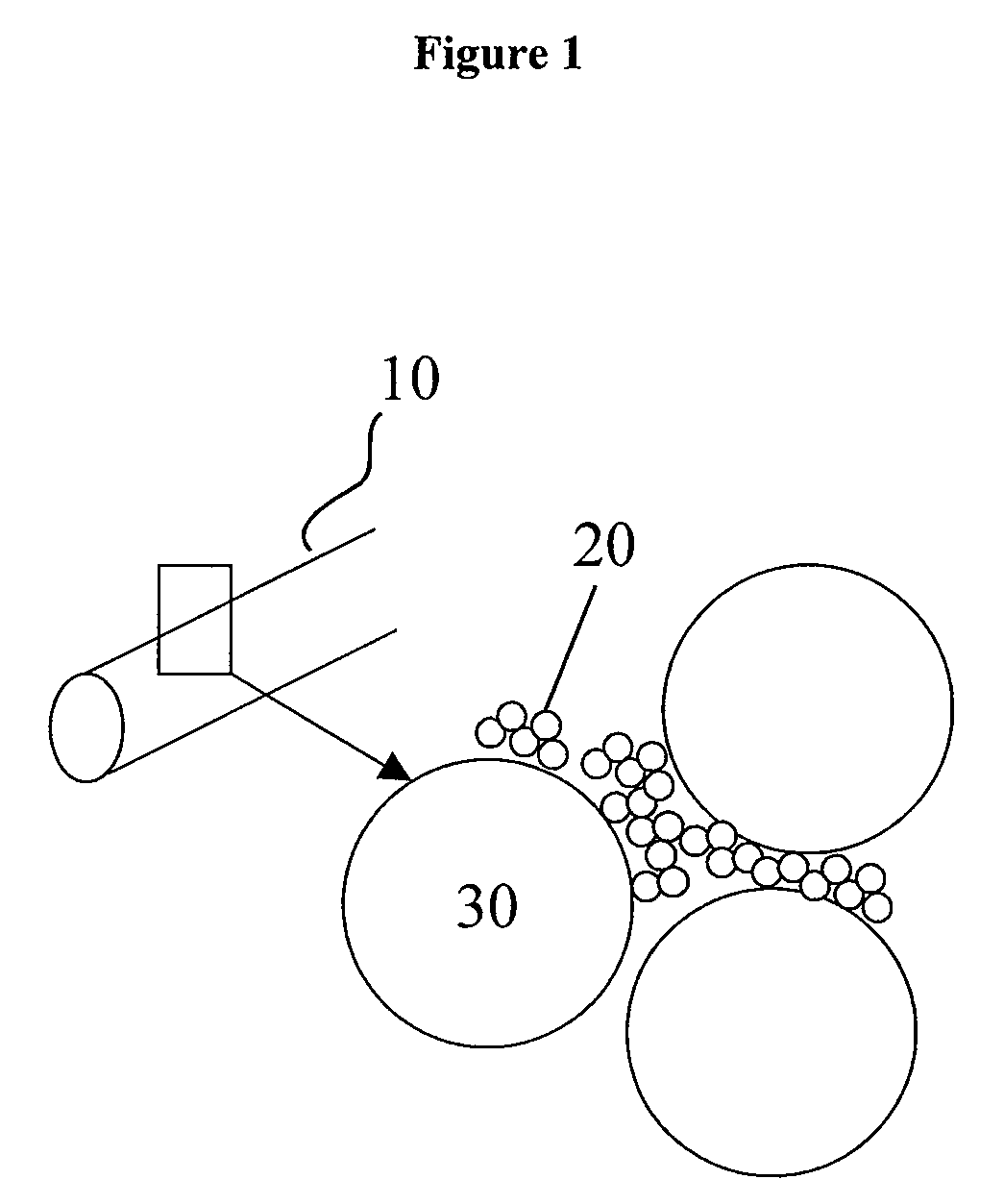Porous, non-degradable implant made by powder molding
a powder molding and implant technology, applied in the field of porous implants, can solve the problems of increasing the thickness of the stent strut, the inability to mold dry mixtures, and the inability to meet injection or extrusion molding requirements, and achieve the effect of sufficient pore volum
- Summary
- Abstract
- Description
- Claims
- Application Information
AI Technical Summary
Benefits of technology
Problems solved by technology
Method used
Image
Examples
example 1
Production of Slurry A
[0141]A slurry was produced using Tantalum nanoparticles and irregularly shaped polyethylene beads. Tantalum particles were purchased from H. C. Starck. Polyethylene beads were purchased from Impag (Microscrub, D50 150 μm). The tantalum particles had a D50 particle size of 100 nm. The slurry comprised 500 g Tantalum, 200 g polyethylene beads, a wetting agent (Byk P-104) and ethanol (commercially available from Merck). The particles were mixed with 100 g of wetting agent and stirred for approximately 20 minutes. 200 g Polyethylene beads were suspended in 200 g of ethanol for 10 minutes and added to the tantalum particles. The slurry was homogenized for 1 hour using a conventional stirrer.
example 2
Production of Slurry B
[0142]A slurry was produced using silicium dioxide and polyethylene beads. Silicium dioxide was purchased from Degussa (Aerosil R 972) and polyethylene beads from Impag. Analogue to example 1, the slurry was produced using 200 g of silicium dioxide by adding 100 g acetone, stirring its for approximately 1 hour and adding 150 g of polyethylene beads. The slurry was homogenized for another 90 minutes.
example 3
Molding of Discoid Implants Using Slurry A; Rapid Heating
[0143]A standard cylindrical hollow mold made out of stainless steel was used with an inner diameter of 3 cm and a length of 8 cm. The slurry A was filled into the mold until ⅘ of the volume was filled and compacting was carried out by using a standard floating mold die press to form a green body. Subsequently, a compaction pressure of 50 MPa was applied for 100 seconds, then repeating the cycle two further times. The green body comprised a discoid type shape with a diameter of 2.8 cm and a height of 4 cm. It was further dried an room temperature for 1 hour and then put into a standard sintering furnace. The green body was sintered with a heating ramp of 20 K / min at 400° C. for 4 hours and then cooled down to room temperature within 20 hours.
[0144]The molded body was cut to analyze the pore structure induced by the polyethylene bead filler. The molded body showed macroscopically a regular surface structure. The fine structure ...
PUM
| Property | Measurement | Unit |
|---|---|---|
| Pressure | aaaaa | aaaaa |
| Pressure | aaaaa | aaaaa |
| Pressure | aaaaa | aaaaa |
Abstract
Description
Claims
Application Information
 Login to View More
Login to View More - R&D
- Intellectual Property
- Life Sciences
- Materials
- Tech Scout
- Unparalleled Data Quality
- Higher Quality Content
- 60% Fewer Hallucinations
Browse by: Latest US Patents, China's latest patents, Technical Efficacy Thesaurus, Application Domain, Technology Topic, Popular Technical Reports.
© 2025 PatSnap. All rights reserved.Legal|Privacy policy|Modern Slavery Act Transparency Statement|Sitemap|About US| Contact US: help@patsnap.com



